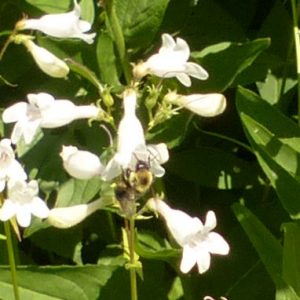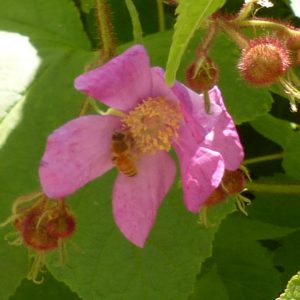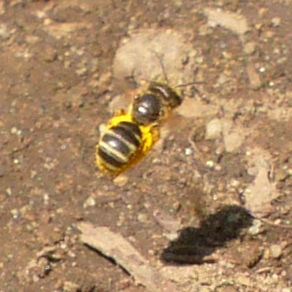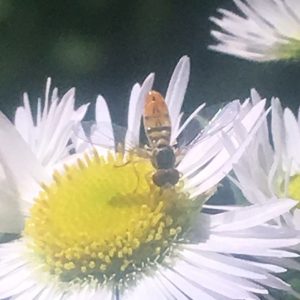by Sandy Garland, photos by Sandy and Fatiha Dia Hantchi
On 29 June, our brilliant Ottawa U student colleagues, Luca Fiorindi, Mira Kindra, Alysha Riquier, and Gia Paola all met to help us look for pollinators at the Fletcher Wildlife Garden (FWG) and learn to distinguish between bees, flies, and wasps. Despite predicted afternoon thunder storms, the weather cooperated: bright, hot, sunny, just what pollinators love.
Luca had prepared a one-page guide showing the differences between wasps and bees and describing the main groups of bees that we might find here. With those in hand, we headed out into the Backyard Garden.
Tiny hover flies were active as well as many small bees. Some of us were lucky to see miner bees disappearing into small holes in a path – leading to tunnels and chambers that they were provisioning with pollen and nectar for their offspring.
Mira, who has been working on a “score card” for rating pollinator habitat, gave the area top marks. Meanwhile, Alysha, who has prepared a pollinator survey protocol began photographing and documenting the insects we were seeing.
After checking all the flowers in the Backyard Garden, we headed over to the FWG’s Butterfly Meadow to see what was at work there. We stopped to check the Mason Bee box that was installed at the beginning of May and found a dozen filled tunnels (filled with bee eggs, each in their own little chamber) and a Mason Bee still at work.
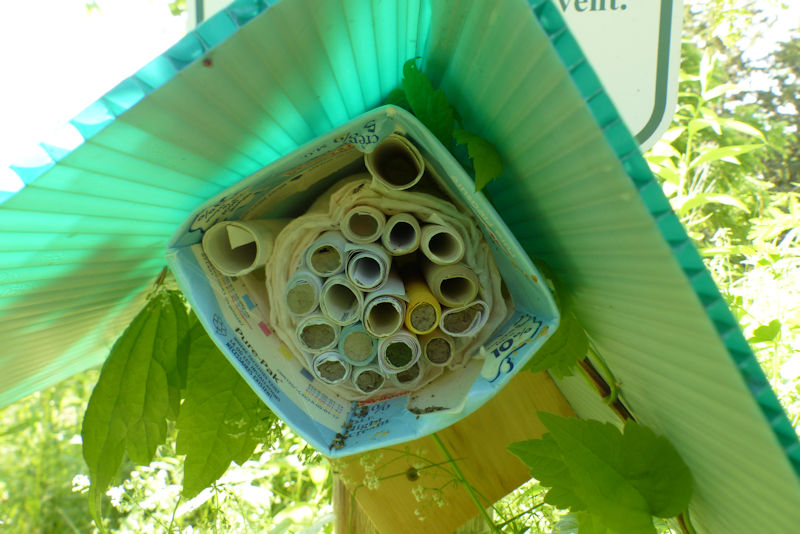
I think I can see 12 filled tunnels in this simple bee box made from rolled up typing paper inside a 1-litre milk carton.
Links to resources
Here’s a list of the resources we used or that you might want to consult to learn more.
Alysha’s Pollinator survey protocol | Protocole d’inventaire – and form in English and French
Mira’s habitat score card – Note: the higher the score, the better the habitat for pollinators (appendix to follow with definitions and details about scoring).
Slides from Jessica Forrest’s presentation showing the diversity of the main groups of local bees
Photos for iNaturalist
Below are some of the photos that I took during the survey, definitely not everything that we found. We’ll upload all photos to our iNaturalist project, which Gia set up for us. We’re still exploring how to extract useful data and will share this information as soon as we do.
Please send us your photos so we can show the full tally. Or upload them to iNaturalist directly!

